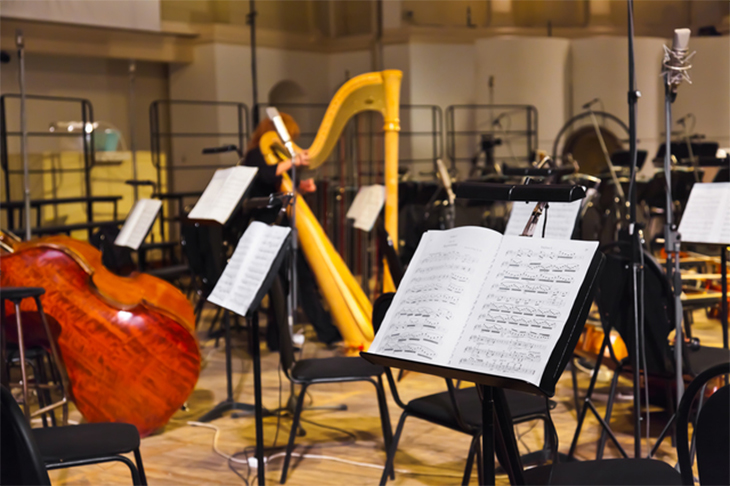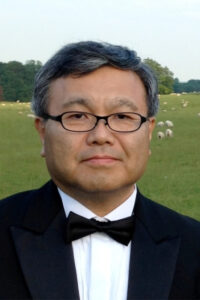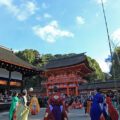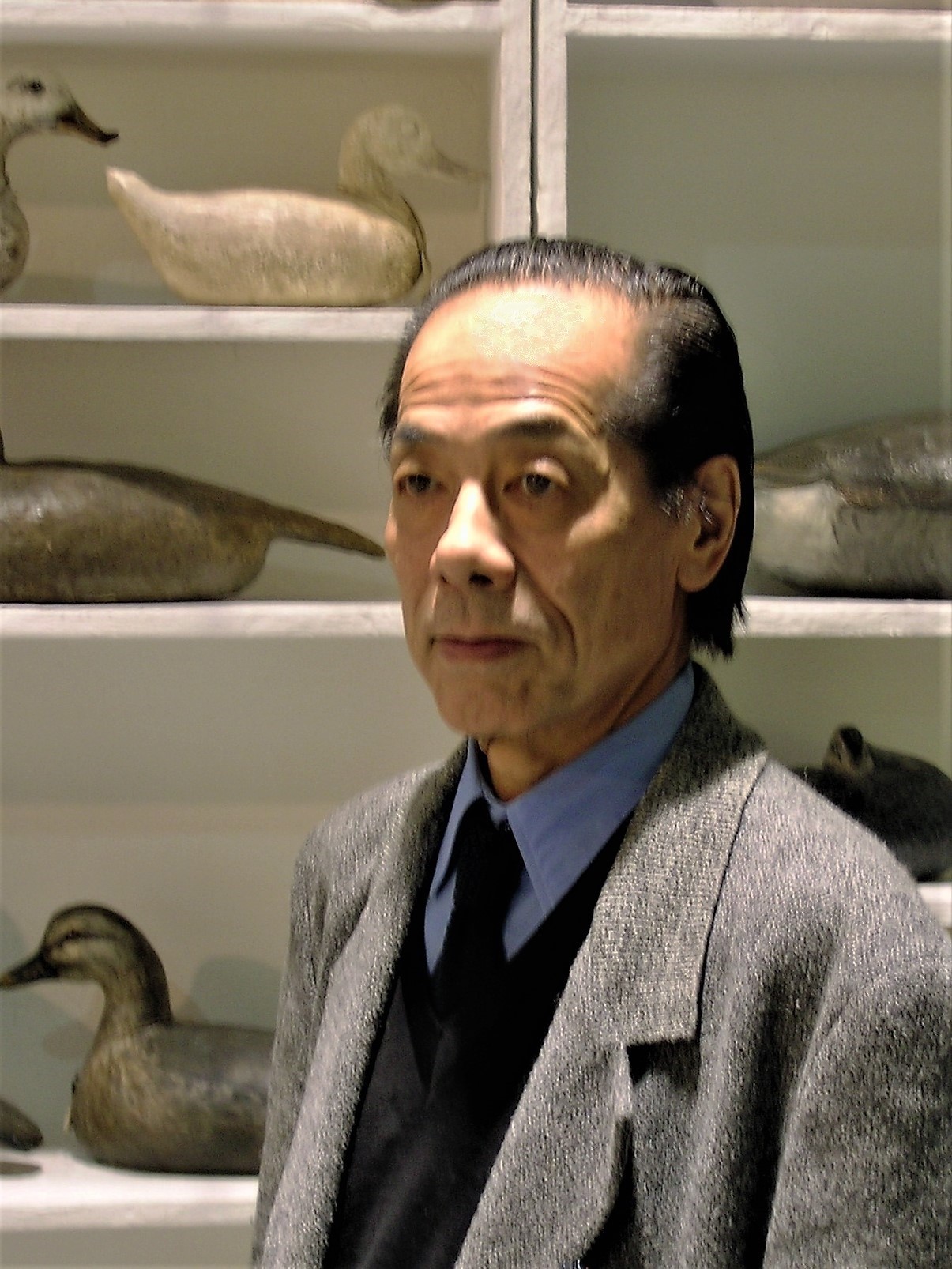Japanese Musicians Active in Europe

Many Japanese musicians have been active overseas since before World War II. After a time when people were required to have an identity as “Japanese,” there are now more and more musicians who are not particular about their Japanese roots or where they perform.
Photo: Violin / PIXTA
Choki Seiji, Professor Emeritus of the University of Tokyo, Music Critic
“Europe” for classical musicians
Like Sakamoto Ryuichi, who was based in New York, there are many musicians who dedicate themselves to their creative and performing activities while living abroad. The fact that Utada Hikaru, who was born in the United States, is based in London does not seem strange at all, perhaps because we live in the 21st century, where globalization has progressed. However, if you think about whether there were any such Japanese popular music (I dare say) artists living abroad before Sakamoto’s generation, it is true that you cannot immediately think of a specific name. After all, in the world of popular music, where the latest styles are emerging mainly in the Anglo-American region, it is stimulating for musicians to live in London, New York, and Berlin, which has changed dramatically from the past and become very American. Furthermore, it is easy to understand that such places are convenient for musicians to obtain information, and that interpersonal exchanges go smoothly. This has not changed even in today’s world where the Internet environment and media have developed.
On the other hand, what is the situation for Japanese musicians living abroad in the world of music that is not “popular”; that is, serious music, or more familiarly, classical music? That would be quite different from the world of popular music, where you have to stay on the cutting edge of trends. In the first place, as long as we are dealing with “classical” music, some may wonder how much up-to-date information and stimulation is needed.
In short, it is absolutely necessary. In fact, if you think about classical musicians living overseas, there are far more performers than composers. However, the performance style of the works that they mainly focus on in their activities, from baroque to modern times, has changed dramatically over the past 50, or even 30 years. The speed of its transformation is in no way inferior to the style changes in the popular music world. Furthermore, the transformation of these performance styles does not use actual standards or measures of whether it sells or does not sell, or whether it is popular or not, as is the case with popular music. Alternatively, it can be said to be a purely autonomous change, since it occurred without any newness as a major goal.
Of course, in a consumer society, new performance styles can become new to the classical music world because of their novelty, become popular, and sell well. In this respect, it is difficult to find a clear difference between the two if you only look at actual phenomena. However, it is true that the motivation that drives change is quite different between the two. Even in popular music, there are some nostalgic elements, but they are limited, and music is constantly changing, seeking new sounds and rhythms, and in recent years, new forms of participation by listeners. In the case of classical music, there is instead research that attempts to reconsider the styles of the works hundreds of years ago and restore them as much as possible (research that originates from so-called “early music”). As a result, new performance styles have been created over the past few decades, which is why they become popular and sell well.
Naturally, these changes in the classical world began in European countries such as England and the Netherlands, and there was a considerable time lag before Japanese musicians “learned” them. It is necessary to sense such information and acquire it as a technique, and even after acquiring this information, continue living in Europe and constantly receive new stimulation. “Historically informed performance,” abbreviated as HIP, applies more accurately to performers who are involved in solo or ensemble activities, where information is updated on a daily basis.
Of course, every orchestra in the United States or Europe now has at least one or two — or in some cases several — Japanese musicians. Not all of them carry out their musical activities “outside the country” with this mindset. Even so, the rapid changes in orchestral performance styles of composers such as Mozart, Beethoven, Wagner, Mahler, etc. (sorry to say that the examples are only German, but of course they include composers from other countries such as France, Italy, Russia, etc.) are also noticeable. There is no denying that this is a place where they can continue their daily performance activities while always being on the cutting edge of the latest stimulation and change.
Image of composers living “overseas”
Japanese classical musicians who are active overseas are by no means rare these days. In terms of number of people, no other art genre can come close to it. However, there are far fewer musicians who create original works, that is, composers, who carry out creative activities while living abroad.
First of all, who could be considered the model for Japanese composers who continued their creative activities while living outside of Japan? For example, before World War II, there were many cases like Yamada Kosaku (1886–1965), who studied in Germany, wrote and published some works, but basically returned to Japan and continued his creative activities. Even for people like Ohzawa Hisato (1906–53), who has been reevaluated in recent years, his creative activities in the United States and France were not very long, and the original purpose of his stay was “learning.” Composers/conductors like Kishi Koichi (1909–37), who went to Germany several times after his initial study abroad to play with the Berlin Philharmonic Orchestra, also had very limited time to do so. It is difficult to find a composer/conductor who had a solid foundation as a creative artist outside of Japan until the end of World War II. After the war, Japanese musicians with an international sensibility followed a similar path. For example, Yuize Sinichi (1923–2015) of Ikuta style koto music studied with Henry Cowell (1897–1965) at Columbia University, worked in the United States for a while (co-starred with Leopold Stokowski [1882–1977] and others), and returned to Japan a few years later to make his home base.
In other words, Europe (or the United States) is primarily a “place of learning” for Japanese composers. In that sense, a space like this full of stimulation and “cutting-edge” information is indispensable for talented young people who want to seriously engage in European music. However, the “model” we will be dealing with here is someone who continues to explore and create their own unique music, either staying in the area after completing their studies, or changing locations and remaining in the area.
Several early composers come to mind: Ichiyanagi Toshi (1933–2022) (New York), Tamba Akira (1932–2023), Taira Yoshihisa (1937–2005) (above, Paris), Shinohara Makoto (1931–) (Cologne, Utrecht etc.), and Matsushita Shinichi (1922–1990) (Hamburg). All of them left Japan in the 1950s and 1960s. Although Ichiyanagi Toshi’s stay in Japan after his study period was shorter than the others, his subsequent impact on Japan was strong. In the sense of “internationality,” as described below, he has become a model for a new form of creative expression that is not restricted to a specific location.
Although the composers listed here were clearly more inclined to study Western music when they left Japan, at some point they found “Japan” and “returned” to it. Or, they incorporated prominent elements that confront Japan into their creations. They have something in common in the sense that they “discovered” Japan for the first time after leaving their homeland. This phenomenon is not limited to Japanese composers, nor is it limited to music in particular. It is often the case that one awakens to one’s roots for the first time when placed in a foreign environment. In that sense, they are typical, and they form a model for Japanese composers working abroad.
Tamba Akira wrote a doctoral thesis titled “The Musical Structure of Noh” in Paris and received his Ph.D. Among the musical features of noh drama, there is a time structure called “jo-ha-kyu (beginning [opening], break [middle], and rapid [and climax] [artistic modulations]).” Tamba incorporated noh’s jo-ha-kyu structure into the time structure of Western music. Through this, he created a unique work that does not align with either the East or the West. Taira Yoshihisa was also drawn to the slightly more abstract, Japanese sensibility of “ma (Japanese spatial awareness, space or pause)” and incorporated this into his taste for lingering sounds and timbres. Shinohara Makoto, who can be said to be one of the standard-bearers of the European avant-garde, set himself the task of “musical fusion of Japanese and Western styles” with his 1972 work Tayutai (Fluctuations). He demonstrated his outstanding talent both in the Messiaen class in Paris and in the creation of electronic music in Cologne. Matsushita Shinichi, who held a professorship in topology at the University of Hamburg, also wrote a difficult theory of time that spans philosophy and physics. Alongside this, he continued to write his life’s work, a huge cantata, The Buddha, commissioned by a Japanese Buddhist religious organization, Rissho Kosei-kai.
In most cases, this “return to Japan” or “look toward Japan” comes from a self-awareness of identity. It is also self-evident that the establishment of one’s identity itself is controlled by the surrounding environment. When you go out into the outside world, you inevitably become aware of things that you wouldn’t notice or don’t need to notice if you were just in Japan. In a situation where the “differences” between “self” and “others” are noticeable, some kind of originality is required, and this becomes an opportunity to reconsider what is truly one’s self, and a return to Japan occurs. It may sometimes feel like “forced.” For example, what the surroundings want from him/her, and what the surroundings want from “me” as someone different from the self, can be distinctions and discriminations. However, it is only natural that we seek in others what we do not have in ourselves. Therefore, it is natural that a situation will arise in which we are forced to think about Japan in such an environment. Others (teachers, composers, and audiences) do not expect the same things from Japanese people as they do.
Takemitsu Toru (1930–1996)
As the Japanese composition world opened up to the international arena in the 1960s (one of the culminating events was Expo ‘70), a return to Japan or “identity acquisition model” has also emerged among composers who lived in Japan, not outside the country. A representative example of this would be Takemitsu Toru (1930–96). A delicate sensitivity to silence and the reverberations of a moment, a sense of time moving quietly and slowly, and a return to the “river of sound” that fills the natural world: these elements form the basis of Takemitsu’s creations. At the time, they matched well with the image of Japan seen from the outside. In a different era, the rhythmic beats and vibrant tones in the music of Ifukube Akira (1914–2006), such as the pulsating “zun zun” and resonating “donchaka” sounds, might have been perceived as distinctly “Japanese,” reflecting a lively and invigorating musical atmosphere. Therefore, both “Japans” are still “created.” However, this does not mean that they can be denied. If “created” Japan and “created traditions” are further refined and purified by Takemitsu and transformed into something unmistakably “Japan,” then this is what “culture” is all about. Homi K. Bhabha (1949–), a standard bearer of postcolonial studies, wrote, “What is theoretically innovative, and politically crucial, is the need to think beyond narratives of originary and initial subjectivities and to focus on those moments or processes that are produced in the articulation of cultural differences. These ‘inbetween’ spaces provide the terrain for elaborating strategies of selfhood—singular or communal—that initiates new signs of identity, and innovative sites of collaboration, and contestation, in the act of defining the idea of society itself.” (The Location of Culture, 1994).
Hosokawa Toshio (1955–)
Hosokawa Toshio emerged from this historical context and continued his creative activities based in Germany. At some point, “Japanese” elements began to become noticeable in the creations of Hosokawa, who is representative of Japan’s contemporary composition world after Takemitsu. Such creative practice is largely due to Isang Yun (1917–95), whom Hosokawa studied under in Berlin, his first place of study. Yun himself is from South Korea, specifically the Korean peninsula during the Japanese colonial period. Yun was similarly involved in the European avant-garde music scene. Yun extracted elements from his roots in his own country’s music and incorporated them into the avant-garde techniques of the time. And he created fascinating music that could not be found anywhere else, that no one else could write, that was painful and severe, but also had a redeeming quality. This provided great guidance and confidence to the many composers who came from Japan to study with him, including Hosokawa. (Although there were people like Miwa Masahiro who followed a completely different methodology.)
Hosokawa’s work is based on a sophisticated embrace of all the techniques that were available to the European avant-garde in the early 1980s. In particular, Hosokawa learned about the possibilities of special playing techniques for musical instruments that had been experimented with through his interactions with various musicians at the forefront, and in particular honed his timbre calligraphy. For a while, starting in the 1970s, the Japanese creative world turned its attention away from the contemporary music world in Europe, which it viewed as stagnant. However, in reality, modern European music continued to move forward, and Japan hardly ever accepted the cutting-edge musical styles that were constantly changing. It has also been totally oblivious to the new historical context that has arisen through the reappraisal of composers such as Giacinto Scelsi (1905–88) and Bernd Alois Zimmermann (1918–70), whom the former avant-garde had ignored. Hosokawa almost single-handedly filled in the blanks in this context of avant-garde creation and value change through reappraisal. This was also a path that was greatly opened to Hosokawa when he moved his base of study from Berlin to Freiburg and studied under Klaus Huber (1924–2017) and Brian Ferneyhough (1943–).
What is interesting is that it was his teacher Huber who encouraged Hosokawa to learn the music of his native Japan. In 1985, he sent Hosokawa back to Japan and gave him the opportunity to deeply study traditional music. This was a major turning point in Hosokawa’s creative career, as he formed new relationships, including meeting Miyata Mayumi (1954–), a Japanese player of the sho (a traditional Japanese mouth organ). The first result would be Sen I for Flute Solo. This is because Hosokawa begins to use the technique of translating the strokes of “sen (line)” in Japanese calligraphy into music. This method of discovering changes in shading, thickness, intensity, and hue within continuity became a fundamental element in updating Hosokawa’s static and dramatic style.
However, for Hosokawa, “Japan” is built on a multifaceted and multilayered image, and it is difficult to capture it in just a few words. A sense of the beauty of nature or kachofugetsu (literally flowers, birds, wind and moon)[1] based on a sensitivity to sounds, an artistic view that is inseparable from nature, a spatial representation like that of a Japanese garden, and every element flows into it in a purified form, such as time representations that are cut out both horizontally and vertically, such as “ma.” Hosokawa’s music is squeezed out as if he were struggling, constantly confronting himself in the gap between the “Japan” that resides within him as a whole, and the European sensibilities that are inextricably linked to his Japanese body. In the genre of opera, which began to be created at the end of the 20th century, including Vision of Lear, a new connection with noh has become evident.
Hosokawa’s distinct musical language has earned him commissions from many contemporary music festivals, orchestras, ensembles, and now opera houses. However, it strictly follows the style of the avant-garde, and was developed in Europe, including a period when Japan was ignoring trends for a while. Hosokawa split his time between Germany and Japan (he had residences in both for a time). Among these, Hosokawa invited many composers and performers from Europe to the “Akiyoshidai International Contemporary Music Seminar and Festival” and the “Takefu International Music Festival,” and introduced the actual avant-garde scene to young Japanese artists. The next generation emerged, and one of them, Mochizuki Misato, continues her creative activities based in Paris.
Mochizuku Misato (1969–)
Mochizuki Misato studied with post-spectralist Paul Méfano (1937–2020), spectral musician Tristan Murail (1947–), and IRCAM (Institut de Recherche et Coordination Acoustique/Musique). Mochizuki’s method is basically based on the sense of speed of pulses utilized by Gérard Grisey (1946–98), and on top of that, she creates more free and multivariable colorful tonal effects based on acoustic spectral ideas. It has the characteristic of sowing the seeds in such a way that multiple functions develop simultaneously, while at the same time progressing in the formulation of the pulse itself. It combines the kind of ecstatic physical pleasure of surrendering to the pulse itself and the omnidirectional simultaneous manipulation of the relationships between sounds. This coexistence ensures that the composer’s style, which is based on cross-disciplinary intellectual interests, is never pretentious. Her smart sense of balance is something no Japanese person had ever mastered before.
What clearly separates Mochizuki’s creation from that of Hosokawa’s generation is that she no longer clings to the identity of “Japanese.” Rather, it can be said that this is a generation that feels burdened by seeking such a sense of identity from “Japanese” sensibilities and Japanese traditions. One of the major reasons for this can be seen as the fact that in the midst of globalization, where the transmission of information is accelerating rapidly, including the development of the Internet environment, the perspective on Japan has changed completely, both from within and from outside. Hosokawa once jokingly said, “We’re the old generation.” To begin with, for Mochizuki’s generation, which began creating in earnest in the 1990s, when looking at “Japanese things” from the outside, it was no longer the traditional culture that it once was. Many translations of Japanese manga began to appear in bookstores in Europe, and mysterious “Japanese food” restaurants began to pop up in the streets. As symbolized by this, traditional culture was being replaced by subcultures and the sensibilities and bodies influenced by them. In the 21st century, this creative tendency based on a view of Japan, which would eventually lead to “Cool Japan,” became even more prominent among composers of serious (contemporary) music.
In one of her essays, Mochizuki recalls having her work viewed by Klaus Huber. Huber said he asked Mochizuki, with some irritation, why you write in the style that European composers write, and why you don’t use Japanese traditional music when there is so much variety. Mochizuki was about to say, “Then why don’t you, a Swiss, use yodeling to compose your music?” What was the meaning of this exchange? For Huber, who had sent Hosokawa back to Japan, it may have been kind and “legitimate” advice. However, the deep-rooted Orientalist ideas that lay behind it could not be wiped out. The composition of “Orient” or “non-Europe” that is differentiated from “universal Europe” is hidden in the background.
However, Mochizuki’s consciousness was no longer there. The binary structure of Japan/Europe is no longer visible. In other words, her consciousness is not of “traditional” Japan, which has already become alien to her everyday life. For her, she has learned and formed herself through European music, and as a Japanese person, there is a Europe that is already present in her, a “localized Europe,” so to speak, that has enough elements to identify her.
Adachi Tomomi and Berlin Kuenstler Program
These trends reach new heights with each generation. Although Hosokawa and Mochizuki have lived in Mainz, Germany (although they have mostly moved away) and Paris, France, they currently hold posts at universities in Japan and have been engaged in creative and educational activities while traveling back and forth. As they receive commissions from various countries and their works are performed on an international scale, it is now becoming less meaningful for composers to create while living only in places other than Japan. (Like Ichiyanagi as a precedent). However, compared to Japan, Europe has a strong “artist-in-residence” system, which has the advantage of allowing people to sit down and devote themselves to their creations. In addition, in terms of people-to-people exchanges, the significance of living in a place other than Japan has not been lost. Whether you realize it or not, you will receive a lot of intellectual, artistic, and daily life stimulation that you wouldn’t get if you lived only in Japan.
For example, Germany has a residency program called the Artists-in-Berlin Program (Berlin Kuenstler Program) of the German Academic Exchange Service. Artists live in Berlin (once an isolated land island) for a certain period of time and engage in creative activities. Its purpose is to provide a free space to artists who have already made outstanding achievements in various fields of art, promote the versatility and diversity of art, and strengthen the freedom of art and language. The period is six months only for plastic arts, and 12 months for other things such as literature and composition, but one artist who remained based in Berlin for a while even after completing this period is Adachi Tomomi (1972–). Adachi works more as a composer/performer than a “contemporary composer.” Using his own voice and a self-made electronic instrument that generates noise full of ideas, he performs in various countries, from large events to small spaces, and stages radical shows that attract audiences. Adachi is also unique as a Japanese “musician.”
Adachi’s activities were supported by Germany’s basically generous art grant system. The reality is that if you plan well, you can get the full amount you applied for. Furthermore, this system, in which projects that have not yet taken shape can be subsidized if they are recognized as meaningful, is very different from the various types of grants in Japan, where only a portion of the application amount is subsidized. Of course, arts grants vary from country to country, and even though the grants are large, in countries such as the United States, where donations are the norm, artists first have to scramble to raise funds and make a lot of phone calls. Adachi, who also lived in the United States, recalls that he may not have had that energy.
Fujikura Dai (1977–)
Meanwhile, Fujikura Dai, the next generation of Mochizuki, continues to live in London. The choice of city may have been a matter of chance. This is because it is easier for contemporary composers to live in countries like Germany and France, which have strong public support for artists, including contemporary music festivals and grant foundations. In fact, it seems that there have been occasions when he has received commissions from institutions such as the Academy of Arts, Berlin and the Lucerne Festival in Switzerland. Like Fujikura, who occasionally teaches but does not (or does not intend to) hold a full-time university position, many of his works are commissioned. He continues to write a significant number of works each year. Even now that he is in a position where he can be called a “popular composer,” it seems like he has to work every time to find a place to pay for the commission, especially when the commission is from an individual such as a performer. The circumstances surrounding this are described in his autobiography, Doshite konachattaka (How did this happen?) (Gentosha), written with a great deal of humor. However, it can also be seen that he is actually quite severe. This clearly conveys the difficulty of being a composer in a foreign country like London, where everything is expensive.
Fujikura’s creations are fundamentally different from those of Hosokawa and Mochizuki. To begin with, Japanese composers have often admired and studied under the “masters” of the avant-garde, such as Olivier Messiaen (1908–92), Isang Yun, Klaus Huber, and Tristan Murail. These “masters” position their creations not only in the contemporary musical situation they face, but also in the traditional European creative history. All of the great composers of the 20th century had this kind of “historical consciousness,” in which their works were by no means strange or heretical, but emerged as an inevitable part of history. It is essential for composers to be knowledgeable about modern times, as well as Bach, Mozart, and Beethoven, as well as Rameau, Berlioz, and Debussy. It was a way of being a disciple to learn from it not only the techniques of composition, but also its history and philosophy, or the ideas that support it, or the historical context in which you are placed.
In Fujikura’s case, it’s quite different. The composer he studied at Trinity College of Music was Daryl Runswick (1946–). He is also famous as an arranger. In a sense, he is a practical and practice-oriented composer. Fujikura is a “current” composer who also uses social media, and you may be surprised to find that he is not afraid to disclose things that previous composers would have been embarrassed to write about, such as the fact that he had just heard Bruckner’s symphony for the first time. When he premiered his own Green Tea Concerto at the Kirishima International Music Festival in 2023, Fujikura professed that he had never heard of Bach’s Coffee Cantata, which was performed alongside the concerto. Those of a slightly older generation may frown at his lack of “musical education,” but this is not Fujikura’s fault.
I feel like I see here a typical example of composers born after postmodernism. There, the historical consciousness itself changed completely. In the past, history advocated and asserted a continuity, even if it was a hypothetical one. Connect facts and represent them as a single flow. However, the fictional nature of this narrative, the possibility of multiple parallel histories, and the simultaneity of different values that is increasingly becoming apparent in the midst of globalization, are all factors that are making it impossible to establish such a narrative. What we are currently seeing is not a seamless historical continuity, but rather an aggregation of multiple points among the many “facts” of the past, and a constellation of these points.
When you think about it like this, Fujikura’s creative style seems very natural. He pays little attention to the historical context of his music. There is little awareness of what happened in the past, or of traditions and customs themselves. Where is Fujikura’s “identity” found? For Hosokawa, it was traditional Japan, and for Mochizuki, it was Europe that had been absorbed into itself. When thinking about this, Fujikura’s specific creative method provides a suggestion. He places great importance on collaboration with performers. In the process of creation, he thoroughly explores the characteristics of the instruments, the personalities of the performers, and the possibilities of handling the instruments with the individual performers in person, online, and in every other way possible. Then, he creates music by giving feedback to the performers and re-examining the results. In this process, an identity as a bundle of multiple personalities is revealed.
As a result of this method, the possibilities opened up are attractive to performers, and the lively music therefore becomes attractive to listeners as well. It is extremely light because it does not have the heavy yoke of continuous history. The joy of listening to his music connects his music to a more open audience, rather than just the limited audience of contemporary music.
Existences like Fujikura cast a ray of hope on the future development of serious music. It is modern and open because it does not dwell on the past. Although it is still unknown how much potential it has, many listeners listen to contemporary works that are not sullen or sullen, but are enjoyable and are not easy music. Behind the “now” of Londoner (?) Fujikura, we can see a form of contemporary music that seemed impossible until now. So, what will ‘happen’ next?
Translated from “Kyokai wo Oukansuru Geijutsuka tachi: Yoroppa de Katsudosuru Nihonjin Ongakuka (Artists who travel back and forth across borders: Japanese musicians active in Europe),” Asteion, Vol. 099 2023, pp. 16-30. (Courtesy of CCC Media House Co., Ltd.) [January 2024]
Keywords
- Choki Seiji
- University of Tokyo
- classical music
- western music
- contemporary music
- classical musicians
- Japanese musicians
- composers
- London
- New York
- Berlin
- historically informed performance
- Yamada Kosaku
- Ohzawa Hisato
- Kishi Koichi
- Yuize Sinichi
- Henry Cowell
- Ichiyanagi Toshi
- Tamba Akira
- Taira Yoshihisa
- Shinohara Makoto
- Matsushita Shinichi
- Takemitsu Toru
- Hosokawa Toshio
- Miyata Mayumi
- Mochizuki Misato
- Artists-in-Berlin Program
- Berlin Kuenstler Program
- Adachi Tomomi
- Fujikura Dai





